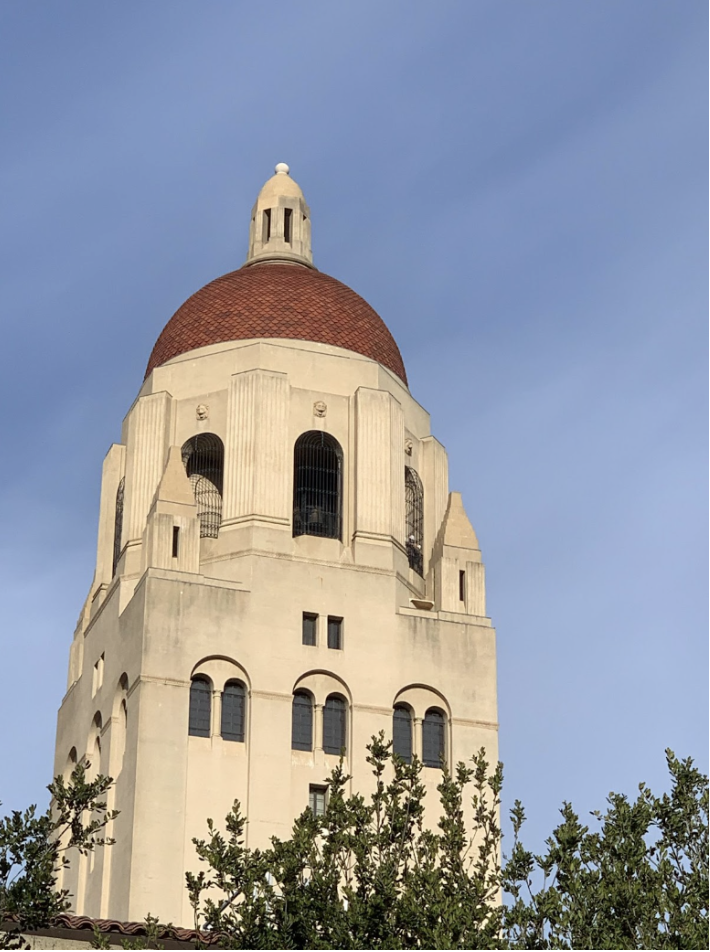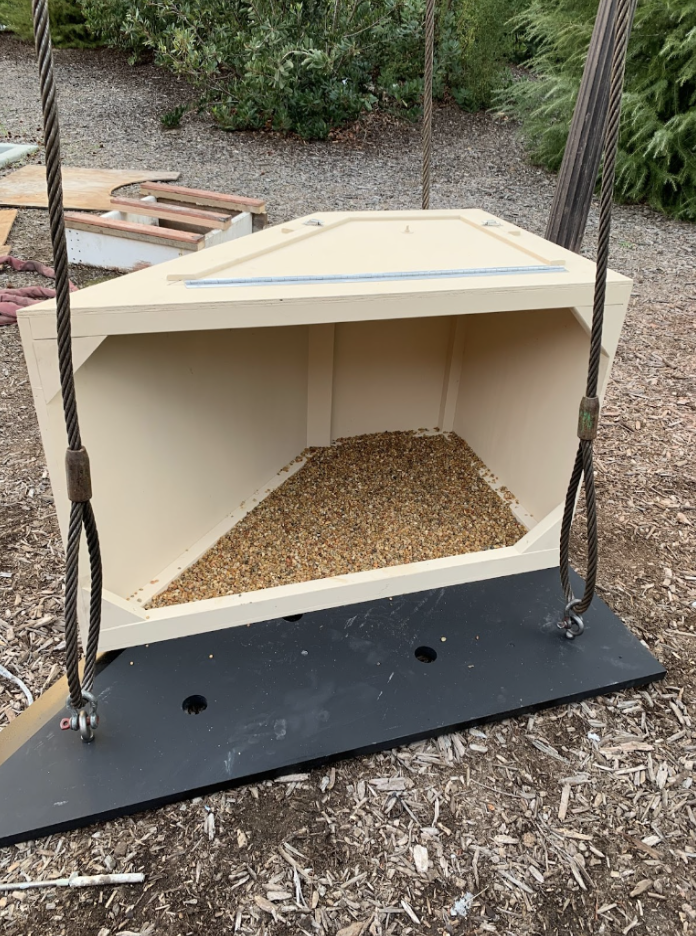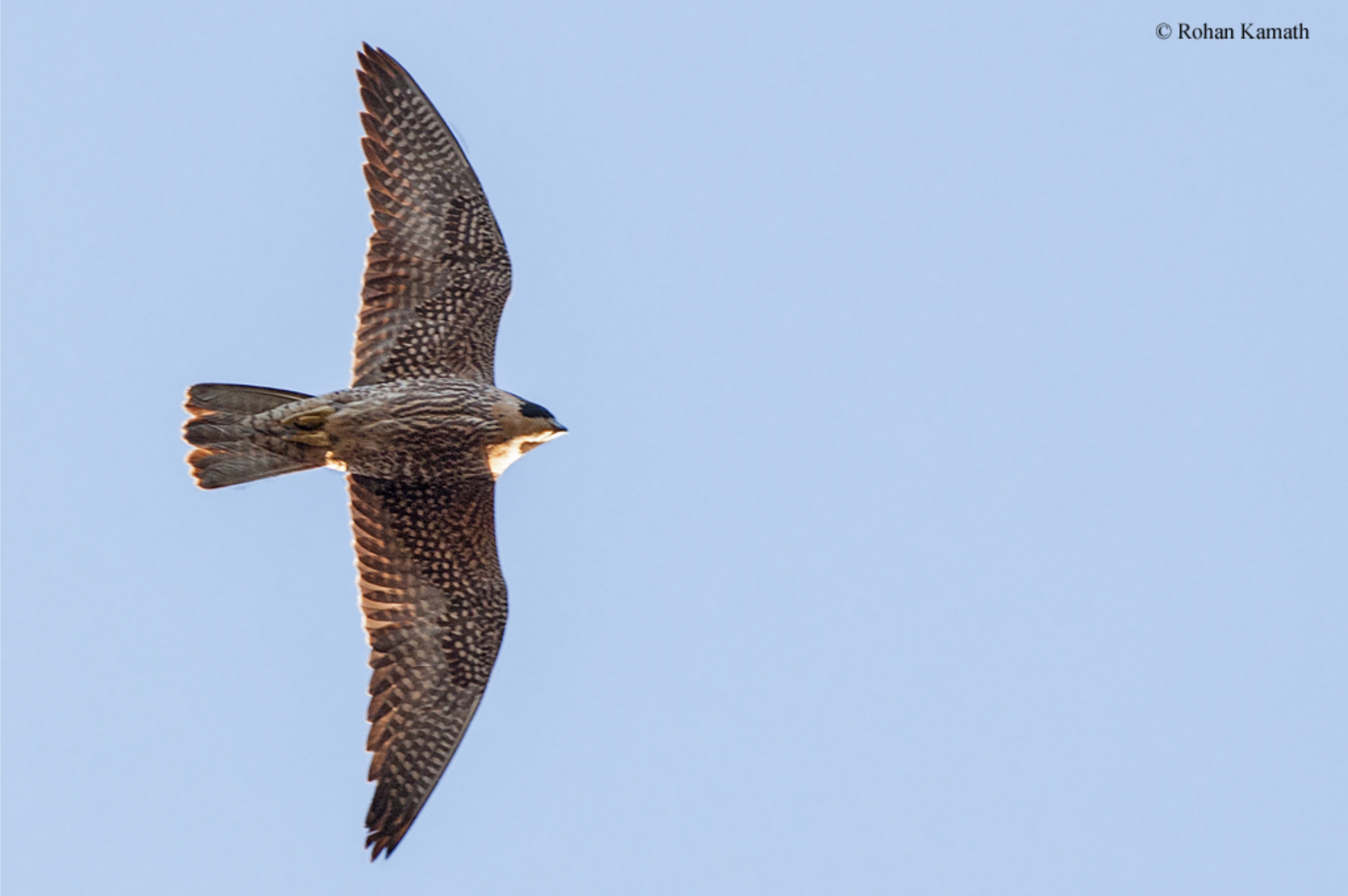Since at least 2011, peregrine falcons — the fastest animals on the planet — have called Stanford home, according to Stanford Conservation Program Coordinator Katie Preston. Yet, despite residing in Hoover Tower, biologists have yet to observe a successful nesting season for the generally urban-tolerant birds.
The peregrines at Hoover Tower have been spotted as recently as May 26, according to Preston. Still, little is known about the particular pair of birds that live at Stanford.
“The pair that currently reside on campus are not banded, a common method used to identify and track wild birds with a numbered band, so we do not know anything about where they were born or how old they are,” Preston wrote.

Across the bay, another nesting pair of peregrine falcons, Annie and Grinnell, famously reside in UC Berkeley. Viewers can track the lives of the falcons through a series of webcams on the site CalFalcons.
When asked if Stanford has plans to install a webcam, Preston wrote, “We do not have any plans for a webcam for the Falcons at this time. Unfortunately, due to the locations that they have chosen to build their nests and their exposure to the elements, our birds experience regular nest failure.”
To combat this, Stanford installed nest boxes on Hoover Tower last year, according to Maya Xu ’25, who works in Rodolfo Dirzo’s lab studying the diet of the falcons. Dirzo is a Stanford professor of earth system science and biology and a senior fellow at the Woods Institute for the Environment.
According to Xu, the two nest boxes are located just below the observation deck of Hoover Tower, positioned opposite each other. “The only way to get those nest boxes installed properly was to go there with a crane. You have to have an industrial crane in order to do that,” Xu said.
However, Xu noted the falcons tend to prefer laying their eggs higher up in the gutter. “When the eggs are there, they sort of roll around and they get really cracked, and the falcon chicks are not able to hatch,” Xu explained.

Xu speculated that Stanford may not be the most optimal home for the falcons because of the noise on campus. “Some members of the bird watching club [have] theories that maybe all of the construction that’s been going on around Hoover Tower could be a little bit disturbing for them,” Xu said.
According to Xu, the nest boxes are positioned based on observability for scientists, not necessarily the best place for falcons. She explained that the proximity to the observation deck means the boxes are disturbed by humans and not optimal for raising their young.
“They are urban tolerant up to a certain point,” Xu said, “Like most birds, if they’re going to have a bunch of people talking a lot and making a lot of disturbance near their nest, then they’re going to feel a little uncomfortable.”
According to Xu, being generalists allows for peregrine falcons to be “urban tolerant.” The birds feed on a variety of small birds but will sometimes also eat bats or voles.
Keeping pesticides or other anthropogenic chemicals at a safe level on campus is key to further supporting the peregrine falcon population, according to Xu. “The original reason that peregrine falcons became vulnerable to extinction was because of high levels of DDT — which accumulated up the food chain to them — weakening their eggshells.”
Drones are another concern. “The CalFalcons team is very strict about having no drones anywhere near the Berkeley Campanile to protect their falcons, and I have noticed people flying them near Meyer Green, which is pretty close to the Hoover Tower,” Xu said.
Peregrine falcons haven’t just captured the attention of biologists. Noah Cowan, M.S. ’23 and an incoming statistics Ph.D. student, spoke about why he follows the CalFalcons and has recently become interested in Stanford’s own falcons, “It’s both something that I’m able to do that’s really easy — I know is right there – and can give me a little bit of peace and quiet when seeing them.”
“There’s something about watching these very ferocious animals when they are in their cute, fluffy, little downy state,” Cowan added.
To Cowan, peregrine falcons are also a source of inspiration. “Airplane engines are modeled after peregrine falcon noses…Their noses are specially designed, such that the air is properly diverted away from their like body so that they’re able to travel at hilariously high speeds without any sort of helmet,” he said.
Xu echoed a similar thought, “I think the best thing that we can probably do at this point…is probably just to raise more awareness about them — that we do have these amazing birds living with us and coexisting with us.”
